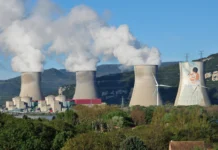 Early September appeared to mark important milestones for US adoption of offshore wind as an energy source, with the appearance of the first such wind farm, 5km off the coast of Rhode Island’s Block Island, and the release of a new offshore wind strategy by the Obama administration, setting out ambitious targets for the technology’s adoption.
Early September appeared to mark important milestones for US adoption of offshore wind as an energy source, with the appearance of the first such wind farm, 5km off the coast of Rhode Island’s Block Island, and the release of a new offshore wind strategy by the Obama administration, setting out ambitious targets for the technology’s adoption.
Onshore wind contributed around 4.4% of electricity in the US in 2014, and is behind only China and the EU in its adoption, but offshore wind is an area where it has trailed behind. The Block Island wind farm has been developed by Deepwater Wind, a firm in Providence, Rhode Island, and will generate up to 30 MW – far less than such wind firms tend to generate in the UK and Europe, some of which have capacities of 11,000 MW.
Speaking to NewScientist, the firm’s CEO Jeffrey Grybowski commented that wind tends to be stronger and more stable over the ocean. The force of this wind also peaks around late afternoon, coinciding with peak energy demand.
Grybowski said wind was clearly the biggest clean energy resource in the north-east of the US.
At present there are around 21 offshore wind projects in development in the US, equating to a projected capacity of 15,000 MW once completed.
In 2015 the US Department of Energy produced a Wind Vision roadmap which set out a projected 86 GW of offshore wind capacity in the waters around the US, with the details of how this might be delivered seeing the light of day in a document released by the Government in early September.
This latest report pinpoints areas where US Government departments could help address the challenges facing the offshore wind industry, such as increasing awareness of the resource’s potential and optimising wind plants for US conditions.
More certainty could be afforded to investors via a more consistent and clear regulatory regime, and by collecting more data to better understand the impact of offshore wind on biological resources and human use of the ocean.







